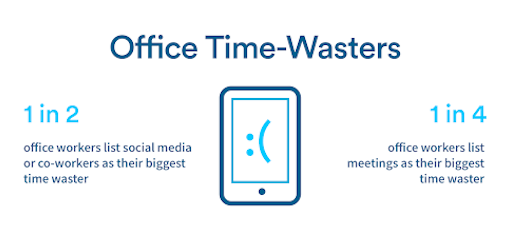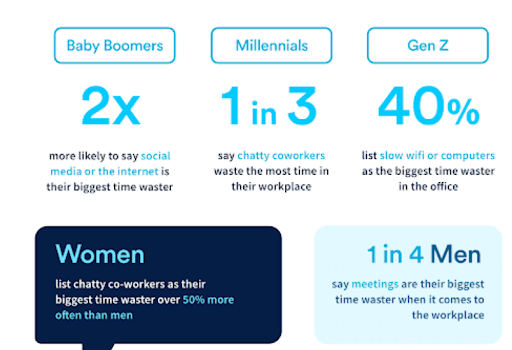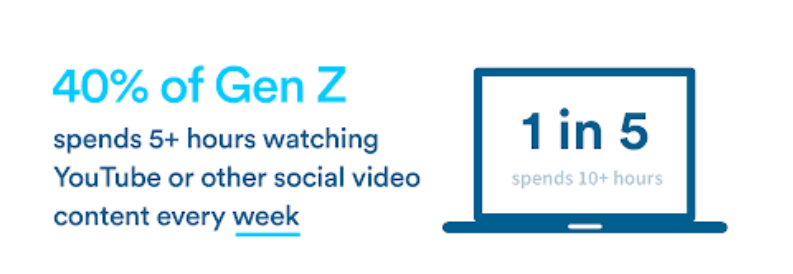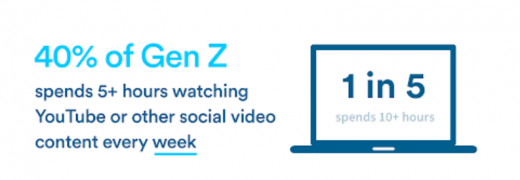The Modern Workplace Demands Better Visibility
The Modern Workplace Demands Better Visibility

The digital economy is giving businesses a clear path to happier employees and lower costs by embracing one of the biggest trends and demands: remote work. The technology was once powered idyllic dreams of typing on the beach.
Now, this dream of remote work has become a driving force in the workplace. Remote work fuels customer service, sales, marketing, IT support, and many more career paths. Professionals who work from home join the neighborhood coffee shop teams both at home and on the road.
The established office scenario is changing.
The drivers of remote-work benefits are becoming the most sought after demographic for hiring and recruiting.
Software is helping to remove the office and many other physical and geographic considerations for teams, but there’s danger lurking in this shift. Technology also dominates productivity concerns, being a leading cause for gains as well as losses.
The global workforce’s reliance on tech means management and leaders must learn how to harness it, teach teams how to use it properly, and take advantage of when it can save them big.
In a world of non-stop notifications, productivity must be purposeful and cognizant of who is on staff. It has also been shown to be a key to customer experience.
Addressing Office Timewasters
With the nature of work changing, it’s no surprise that the biggest disruptions to our work lives are changing too. What may shock you is to learn what different groups view as the chief time wasters in the modern office.
According to CloudApp’s State of Productivity report, the biggest concerns in the office related to structured and unstructured distractions.
hose structured interruptions come in the form of meetings, where 25% of all office workers say they’re the biggest time-suck. While we’re sure that everyone reading this has complained about meeting length and usefulness, no age group calls them out as the biggest offender.

It turns out, people are the biggest reasons we break out of productivity zones.
These unstructured interruptions impact both the ability to focus on a task and the way many wish to collaborate. These interruptions hold true whether they’re in-person conversations or through online channels such as Slack and social.
Other biggest office time wasters.
Often, it is the element of work that people did not have during their formative years that seems to be the biggest interrupter:
- Baby Boomers are two times as likely as any other group to say that social media and the Internet waste the most of their time at work.
- Roughly one-third of Millennials list “chatty coworkers” as the biggest time wasters in their workplace.
- Gen Z returns us to the tech focus, with 40% saying the biggest interruption to their day is slow wi-fi or computers in the office.
Because of the size of those demographics, more than half of all office workers say socializing, whether it’s on social media or with a co-worker, is the biggest cause of interruption to their daily work.
The Millennial concern is interesting and may be related to the way technology grew up as they did. Instant messaging has become a common tool for chatting with friends and texting has slowly replaced phone calls for many interactions. So, Millennials are able to control how and when they respond in many social settings, which isn’t available when someone pops by your desk.
The more things change — the more they feel the same.
Men and Women Interrupted
If we look along gender lines instead of age groups, another difference emerges in timewasters.
Women are 50% more likely than men to say that a chatty coworker is the biggest harm to their productivity. The study didn’t breakdown who was doing the talking, which could be an interesting angle to look at for your specific company.

Women are more likely than men to gossip at work — 79% versus 55%, according to a recent Office Pulse study. But men tend to gossip for at least an hour per week, compared to an average of 30 minutes for women.
The position of those who gossip may also play a role in that about 30% say their boss asks for gossip or spreads it.
It can be hard to say “no” or exit a conversation when leadership is the one asking.
The CloudApp study says men, on the other hand, view meetings as the biggest interrupter to their productivity. However, at just 25% saying this — it isn’t a strong majority. There’s plenty of overlap with women in terms of chatty coworkers.
Given that 62% of all workers still prefer in-person communication at the office, interruptions and scheduled meetings provide an ever-present source for distractions. These office communications aren’t having a big enough impact on perceived performance. Lack of perceived interruption to productivity makes a complete shift to things like Slack, email, or video conferencing not yet likely.
Communication Is the Heart of Success
What the dataset really calls out is that bad communication gets in the way of one’s work. This could be the over-sharer in the office or the meeting that doesn’t provide value while interrupting a busy day.
When we note that 60% of people prefer to collaborate visually when it is available, we can see this as more than just a meeting tool. It’s an explanation of priority and preference. Visual meetings place an emphasis on your deck and presentation. So, the meeting is of some importance and the presenter has taken time to prepare, not just ramble on about recent news.
Teams want to be engaged. Visual meetings also rely on the cameras of those involved, sharing everyone’s face and grabbing attention. People are present and it becomes clear to see when something isn’t relevant, or things go on for too long.
It’s the meeting-related brain drain we’ve all faced, especially at those right after lunch. The takeaway for managers and leaders is to use meetings for the most vital information, avoiding having them turn into times where people chat too much or eat up too much time.
Training for Collaboration
“How?” is the natural follow-up question to getting meetings to be useful. The most likely avenue is direct training on identifying what’s important as well as how to run and manage a visual meeting.
Whether it’s how to build a deck and limiting information on slides to make them easy to understand, or how to assign different meeting elements to people for quick presentations, learning and training can help. You can also ask your team what they find value in, or what they feel uncomfortable within meetings.
Training can determine when something might be inappropriate, such as rating a manager or coworker with everyone else present.
Meetings are designed to share information and their goal should be to provide an update in a quick, enjoyable way that keeps people’s attention. If your audience is engaged, they’re less likely to view the meeting as a waste of time or the conversations in a meeting as just being chatty.
The CloudApp study notes that 94% of workers view collaboration as one of their top workplace priorities. Remember that this covers the way they interact throughout the day, including at their desks or in the meetings that you might be running.
Understanding and Addressing Preferences
Communication preferences can impact much of this collaboration and how leaders should address their teams. According to the studies:
- Baby Boomers prefer in-person and phone-call communication
- Gen Z and Millennials are 3x more likely to use Slack and related tools, compared to Boomers and Gen X
- Gen X is roughly 4x more likely to use video conferencing to communicate with their team
Each subgroup is using different tools to create communication.
Each group is also more likely to feel like its preferred communication tool provides the same value as in-person communication. A Slack chat with Gen Z will feel as personal as a phone call to a Boomer.
You can see this in the way these age groups also tend to approach personal customer service needs. Millennials and Gen Z prefer live chat and text-based support when they are having issues. Baby Boomers and Gen X are willing to get on the phone with support 40% more than younger generations.
According to Microsoft, younger consumers also prefer social media, online self-service, and online chat at higher levels than others. As consumers age, they tend to be less inclined to use these channels as well as texting but are significantly more likely to use the phone for support.
Surprisingly, email stays relatively flat across age groups and is never the most-preferred channel.
Employees are consumers too. When they have an issue, they go directly to support. That’s as relevant for buying a pair of shoes as it is for approaching IT or a manager about issues. Learning customer service trends for your employees and industry might help you better understand them.
Expanding Visual Tools and Support
More than half of your staff would collaborate more if they had visual tools. If your office is dominated by Gen Z and Millennials, this reaches 60%. If you’re just looking at video for conferencing, Gen X will be the most satisfied with the option.
There’s a preference for visuals among teams that are still learning about their positions and the company.
That is a preference for visuals in the form of skills they need to perform common functions or Gen X taking the reins of leadership.
Video and visuals have become a dominant way people in our world communicate and learn. YouTube is still the second most popular search engine, and it is playing a growing role in SEO and marketing.
YouTube is another area where the thinking and preferences of employees should be looked at in the same way you would look at a customer personas. If you’ll look at issues in this way — it can be helpful for your entire team.

Understand that 40% of Gen Z watch more than 5 hours of video per day on YouTube and other social channels.
If you read, watch and understand the stats it can help you better understand how to train the individual groups. Especially relevant for training is when confronting a new tech or anything else that needs in-depth learning.
Instead of video impacting productivity, it could be used to channel it.
At the same time, you could review individual habits to see when something like social media or YouTube viewing is impacting productivity. Work on ways to limit access or transition that downtime into something more productive.
If a cohort turns to video for relaxation or to de-stress, a company or manager might share favorite, short videos each morning. Communication preferences give you an insight into how your team is willing to engage. Allowing employees to create and share video — related to work of course — could be a significant benefit as well.
Annotating existing training materials or tools that support a screengrab to ask a question might help you solve issues faster.
Mission, Culture, and More
Focusing on employee preferences for communication is simple. It can be a direct way for a company to show that its mission and culture are employee-driven. You’re taking the time to understand and adapt, helping people feel connected.
hat connection is vitally important for having happy employees in 2020 — and, yes, happiness is linked to productivity too. A quick look at Glassdoor’s 100 best places to work for in 2020 shows a rise in mission-driven companies. The emphasis on culture and employee connection has also kicked many tech companies lower down the list.
Employees are also looking at how existing staff is treated and if that fits with their personality, alongside the mission.
There are now more tools and sites than ever to take someone inside your company. A tight labor market combined with greater information means every company needs to protect employee satisfaction as well.
Help teams get their best work done so that they can thrive and enjoy their own performance. Give teams the tools they need to get help or share these wins. Teach people how to improve and make learning as easy as possible, especially if it comes from other team members.
Collaboration is the key to the workforce of the future. Whether it’s managing people in a single location or spreading to the winds and having software tether everyone to their work responsibility.
The post The Modern Workplace Demands Better Visibility appeared first on ReadWrite.
(17)


